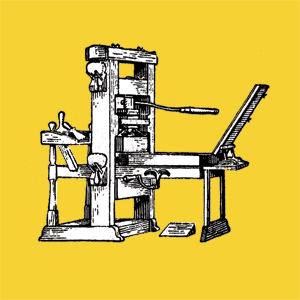 |
|||

|
Printing has long been an important industry for Cambridge as the city was home to British North America's first printing press. Spanish America, colonized before British America, housed the first printing press in the New World. Mexico City set up a press in 1539, and the publishing houses of New Spain primarily printed religious manuals, catechisms, grammars, and dictionaries. Bibles, however, were rare, as the Church wanted to ensure the laity received the teachings of the Bible only through the sermons of the religiously-educated. Cambridge was at the center of a wholly different religious experiment in British North America. By its very contrary and questioning nature, the Protestant coloring of New England eliminated the possibility of an overarching, supreme authority beyond one's individual relationship with God. To facilitate this belief, Harvard College was founded in 1636 as a seminary for the Massachusetts Bay Colony, and Bibles were found throughout British North America. Despite being plentiful, Bibles, by law, were supposed to be entirely imported from England. The first printing press came to British North America two years after the founding of Harvard College. The press was brought by Reverend Joseph Glover, who, when deprived of his position in the Church of England, shipped his family, his possessions, and his printing press to the colonies. Glover also paid for the passage of the man in charge of running his press, Stephen Daye, a locksmith by profession. Daye was under financial contract to work in Glover's home in Cambridge in order to repay the cost of passage for himself, his wife, and his household—a total of around £51. Rev. Glover, however, did not survive the passage to the New World. When Daye and the press arrived, his debt was transferred to Glover's widow, Elizabeth, now owner of the printing press. Daye set to work almost immediately along with his son Matthew, an apprentice printer, and perhaps more skilled than his father. Within the first year in the Massachusetts Bay Colony, they printed The Freeman’s Oath, a broadside, which is generally believed to be the first tract printed in British North America. This was completed around the same time as “an almanac made for New England by Mr. William Pierce.” 1 By virtue of exploiting a loophole in colonial legislation, Daye printed the first book in the New World, The Bay Psalm Book, in 1640. This book became extremely popular and influential throughout the colony for the remainder of the 17th century. It was only three years later that the first Bible published in the New World was also published in Cambridge. Elizabeth Glover (born Harris), as an unmarried woman, was a rarity in colonial New England. Especially unique was that she was not only an eligible woman of property but also the owner of the only printing press in the British colonies. Her attractiveness as a mate was clear to the President of Harvard, Henry Dunster. On June 21, 1641 they were married, transferring all of her property to his home on the now-named Dunster Street. Elizabeth died in 1643, and her land and property, including the printing press, was passed on to Dunster and subsequently to Harvard College. During the same year Matthew Daye replaced his father as official operator of the press after the elder Daye was briefly jailed for fraud. As Harvard grew in size and reputation, it became a logical center of printing in the American colonies. Cambridge was the location of not just the first printing press, but also the second when in 1659 a press was sent to the colonies from the British firm “The Company for the Propagation of the Gospel Amongst the Heathen Natives of New England and parts Adjacent in America.” Matthew Daye's successor Samuel Green was in charge of printing at this point, but the British firm also sent over the America's first professional printer, Marmaduke Johnson, to assist Green. The new press was set up in Harvard Yard, in a building called the Indian College, to print Reverend John Eliot's “Indian Bible.” Marmaduke Johnson acquired his own press in England in 1665, and planned to bring it to Boston in order to establish his own business. However, Harvard wanted a replacement for Glover's original press, having become fragile over the years, and the Harvard leadership successfully lobbied for a state law stating that no printing could be done outside of Cambridge. Forced into staying in Cambridge, Johnson instead, without any affiliation to Harvard, opened the first independent printing press in the colonies and went on to publish 20 books between 1665 and 1674. The generations of Daye, Green, and Johnson marked Cambridge as an established center of publishing during the 17th century, but printing was minimal for much of the 18th century. It was not until in 1802 when “University Press, Wiliam Hilliard,” appeared on the Harvard Commencement broadside that interest was reignited. By the end of the 19th century Cambridge was again a major publishing center. In 1852 Henry O. Houghton created the Riverside Press and went on to publish the works of Longfellow, Thoreau, Hawthorne, and Henry James. In 1880 Houghton partnered with his friend George Mifflin and together they founded and led the Houghton-Mifflin Company, still in existence today. In 1895 the Athenaeum Press, another distinguished publisher, moved to Cambridge. In 1913, Harvard University Press, still with one of it's offices in Harvard Square, was founded and remains a leader in academic publishing. Today, Cambridge is again a forerunner of new innovative approaches to publishing. Google Books, the tech giant's innovative approach of digitizing and making books available online, is based out of their Cambridge branch. A great deal advanced from Stephen Daye's first press in 1638, Google Books is only the most recent development in Cambridge’s long history of innovation in the printing industry. Only the future can tell how influential this idea will become, but it is clear that the storied history of Cambridge has long been part of the story of printing in America. Sources: |
||

